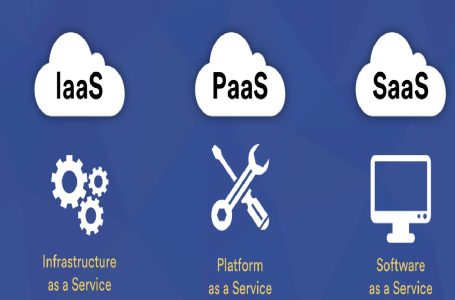By Vladimir Dmitriev, Digital Accessibility Expert at Attico
If you’re building with Drupal and want your product to be inclusive from the start, you’ll need more than a checklist. Our Drupal development team works with clients every day to help them deliver accessible, scalable experiences that hold up under real-world use. But whether you’re building in Drupal or something else entirely, the same question always comes up: is accessibility really worth the effort?
So if you’re trying to decide whether to prioritize accessibility in 2025, this article is for you.
What we mean by accessibility
Before we dive into pros and cons, let’s be clear: accessibility isn’t a “feature.” It’s not a plugin. It’s a set of design and development practices that make your site usable by everyone, regardless of ability, environment, or technology.
“Accessibility is what connects your product to the full diversity of its audience,” The author says. “If you’re not building with that in mind, you’re leaving people out.”
This includes users with permanent impairments (like blindness or motor disabilities), but also people with situational limitations (like trying to use a phone while carrying groceries). It even includes people aging into new needs. None of this is hypothetical — it’s life.
Why accessibility makes your site better
Let’s start with the upside. Because in my experience, once teams see how accessibility improves things for everyone, they stop seeing it as extra work.
1. Inclusive by design
Good accessibility practices often make the product easier for all users. Better contrast, clearer layouts, more intuitive navigation — these things benefit everyone, not only people with disabilities.
“The best accessible sites don’t feel accessible,” Vladimir likes to say. “They feel simple, elegant, and comfortable.”
2. You reach more people
Over 1.3 billion people globally have some form of disability. Many more experience temporary barriers, like being in a loud place, having a broken wrist, or using an older device. Accessible design helps you reach all of them. That’s not just ethics. That’s smart business.
3. Your SEO improves
Accessibility isn’t just about humans. Search engines also prefer semantic HTML, proper alt text, and logical structure. When you build accessibly, you’re also building for discoverability.
4. Your UX gets sharper
Accessibility forces you to slow down and ask: Is this interface really intuitive? Can people understand what to do without guessing? Does this form error help or frustrate?
These are the same questions great UX designers ask. Accessibility makes them non-negotiable.
5. You protect yourself legally
In 2025, accessibility laws are no longer something only governments worry about. Whether it’s the European Accessibility Act or U.S. ADA regulations, more sites are being held accountable for excluding users with disabilities.
“I’ve worked with clients who received legal warnings out of the blue,” the expert explains. “They weren’t trying to exclude anyone. They didn’t realize they were doing it.”
Accessibility isn’t a kindness. It’s compliance.
What happens when you delay
For all the benefits, here’s the uncomfortable truth: accessibility gets harder the longer you wait. And most companies wait too long.
“The biggest problem I see isn’t resistance — it’s regret,” he often reflects. “Teams wish they’d started earlier. Because by the time they call me, they’re usually in a bind.”
Here’s what that bind looks like.
1. You pay more to fix things
Accessibility retrofits are expensive. Why? Because you’re rebuilding parts of your product that were never meant to support accessible interaction. Your color scheme might need rethinking. Your components might need rewriting. Your content may need a full audit.
“One client had to rethink their entire design system,” he remembers. “They didn’t realize their primary brand color failed contrast ratios until we were halfway through QA.”
2. You delay product delivery
Rushed accessibility fixes often clash with sprint goals. Suddenly, QA has new checklists. PMs have to reshuffle tickets. Everyone’s stress levels spike.
If the work had started earlier, none of this would be a surprise.
3. You break things by accident
I’ve seen accessibility patches create new issues. For example: adding alt text to decorative icons that don’t need it. Or inserting ARIA roles in the wrong places. Or creating keyboard traps that frustrate users.
“Bad accessibility is worse than none,” The expert warns. “Because users still get excluded but now they’re confused on top of it.”
Cost efficiency: myth or reality?
Let’s be honest. Some teams are told that accessibility is cheap. “Just run a plugin, add some alt text, and you’re good.”
That’s not true. Not at scale. Not if you want to do it right.
Accessibility is cost-efficient only when it’s part of your core process. If you’re planning, designing, and building with accessibility in mind from day one, yes, you’ll avoid a lot of downstream expense. But if you’ve already launched, and your site is full of inaccessible patterns, the cost can spike.
“Cost efficiency depends on when you start,” Vladimir often advises. “If you start now, even incrementally, you’ll save yourself a lot of pain later.”
How to retrofit without starting over
Good news: you don’t have to rebuild your site from scratch. Here’s how we usually approach it:
1. Apply accessibility to all new features
From this point forward, make accessibility a requirement in every ticket. Add it to your definition of done. Train your designers. Update your dev checklists.
“Accessibility isn’t about fixing the past — it’s about shaping the future,” he likes to remind teams. “If you start with new features, you’re already ahead.”
2. Audit the most critical pages
Homepage. Login. Signup. Checkout. Focus on the flows that matter most. These are where most drop-offs happen and where inaccessible design causes the most harm.
3. Create a backlog, not a panic
List the accessibility issues you find. Prioritize them. But don’t treat them all as blockers. Fix what you can in each sprint, and chip away at the debt over time.
4. Give users a way to report issues
Even something as simple as a feedback form in the footer makes a difference. Users notice when you make the effort, and they appreciate being heard.
“You’d be surprised how often users thank you for listening,” he points out. “And they often give better bug reports than your test suite.”
Additional strategies to build momentum
One thing I always stress: accessibility is a long game. Even if your site is behind today, the right process will help you catch up — without halting progress. But that process only works if it fits into your team’s day-to-day habits.
So, beyond auditing and ticketing, here are a few more ways to keep accessibility on the radar without overwhelming your roadmap.
1. Integrate accessibility into design reviews
Too often, accessibility checks happen after the design is already approved. That’s a mistake. By then, changes are expensive and emotionally harder to justify.
Instead, create space during the review process to ask questions like:
- Is this color combination readable at WCAG AA contrast ratios?
- What happens to this component when the user zooms in 200%?
- Will this layout still make sense when viewed linearly by a screen reader?
“These aren’t edge-case questions — they’re stress tests for real-life use,” the expert warns. “And the earlier you ask them, the more useful they are.”
Even 15 extra minutes during design critiques can prevent weeks of rework.
2. Use your component library wisely
If your product is built with reusable components — and most are — then you already have a head start. Improving accessibility at the component level creates exponential returns.
Let’s say your form field component now includes:
- Proper <label> tags
- Descriptive aria-describedby references for help text and errors
- Visible focus styles
- Semantic HTML structure
With that one update, every form in your product instantly becomes more accessible.
“Fix a pattern, not a page,” he likes to say. “That’s how you scale accessibility.”
If your team uses Storybook or similar tools, you can even write accessibility rules into the documentation. That way, every developer using that component knows what’s expected.
3. Make accessibility part of onboarding
Hiring new team members? That’s the perfect time to share accessibility expectations.
Create a short internal guide, just a one-pager with things like:
- How to check contrast using dev tools
- Keyboard navigation basics
- Screen reader testing tips
- The link to your accessibility backlog
Even a brief walkthrough during onboarding helps set a cultural norm.
“You’re not training individuals,” the expert notes. “You’re shaping the habits of your future product.”
Tools and support that actually help
There are great tools out there. I use them all the time. But they’re only helpful when combined with human oversight.
- axe DevTools – browser-based and developer-friendly
- Wave – great for quick visual scans
- Lighthouse – bakes into Chrome DevTools, also reports on performance
- HeadingsMap – helps you audit semantic structure fast
But tools only show you what’s missing. They don’t teach you how to think accessibly.
“A plugin might catch a missing label,” he explains. “But it won’t tell you your entire signup flow is confusing.”
That’s where working with specialists can make the difference between compliance and real usability.
Who owns accessibility?
If I could change one thing about how teams approach accessibility, it would be this: assign ownership.
“Everyone assumes someone else is doing it,” Vladimir warns. “That’s how things get missed.”
Whether it’s a product owner, QA lead, or dedicated accessibility champion, someone needs to drive it forward. Not just when something goes wrong, but proactively.
That doesn’t mean going it alone. But it does mean taking responsibility for momentum.
Final thoughts
Accessibility is no longer a side topic. It’s the cost of doing business online. Whether you’re a startup or a global enterprise, your users are diverse. And your site needs to reflect that.
You don’t have to fix everything at once. But you do need a plan. And you need the willingness to learn, adapt, and improve over time.
“Start where you are,” advises our expert. “Make one feature better. Add one process. Fix one broken label. And then keep going.”
Because accessibility isn’t about compliance—it’s about creating digital spaces where everyone feels seen, heard, and able to participate. And that’s what makes the web human.
Author: Vladimir Dmitriev
Vladimir Dmitriev is a Digital Accessibility Expert at Attico. With a deep understanding of accessibility standards and user-centric design, he helps organizations build compliant, user-friendly digital products.





